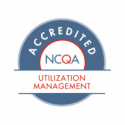The Role of Leadership in Fostering Organizational Mental Health
A staggering 60% of healthcare workers report feeling burned out, a fact that underscores the pressing need for effective leadership in cultivating a mentally healthy workplace. A workplace where employees feel supported, valued, and mentally equipped to tackle their daily challenges is a vision many strive to achieve. As hospital executives and HR leaders, the responsibility lies with you to shape a culture that prioritizes mental well-being and mitigates burnout.
Healthcare leaders can play a pivotal role in fostering an environment where staff mental health thrives. From promoting open communication to implementing tailored wellness programs, the strategies outlined can transform your organizational culture and enhance overall job satisfaction.
Understanding the Impact of Leadership on Mental Health
Leadership sets the tone for organizational culture. When leaders prioritize mental health, it creates a ripple effect throughout the organization. Research indicates that supportive leadership can significantly reduce burnout and improve job satisfaction. For instance, organizations with strong mental health frameworks report lower turnover rates and higher employee engagement. This is not just about improving morale; it’s about creating a sustainable workforce capable of delivering high-quality patient care.
Consider the case of a large hospital that implemented regular check-ins and mental health days for staff. The result? A noticeable decrease in absenteeism and an increase in team cohesion. This example illustrates that when leaders actively engage with their employees, they foster a sense of belonging and support that is invaluable in the high-stress environment of healthcare.
Building Trust Through Open Dialogue and Support
Creating a Culture of Open Communication
Open communication is fundamental in creating a mentally healthy workplace. Leaders should encourage an environment where staff feel comfortable discussing mental health challenges without fear of stigma. Regularly scheduled meetings and anonymous feedback channels can facilitate this dialogue, allowing employees to voice their concerns and suggest improvements.
Training managers to recognize signs of burnout and promote mental health resources is another essential step. For example, equipping leaders with tools to have empathetic conversations can lead to early identification of issues, allowing for timely interventions. According to a recent study, workplaces that prioritize mental health communication see a 30% increase in employee well-being metrics (source).
Implementing Tailored Wellness Programs
Wellness programs tailored to the unique needs of healthcare professionals can be a game-changer. These programs might include stress management workshops, mindfulness training, or access to counseling services. The key is to offer resources that resonate with employees and address their specific challenges.
One innovative approach has been the introduction of peer support programs, where employees can connect with trained colleagues to discuss their experiences and coping strategies. These programs not only provide immediate support but also foster a sense of community and shared understanding. A hospital that integrated peer support into its mental health strategy reported a 40% improvement in staff morale within just six months (source).
Recognizing and Rewarding Efforts
Recognition plays a significant role in employee satisfaction. Leaders should celebrate achievements, both big and small. This could mean acknowledging hard work during team meetings or implementing formal recognition programs that highlight employees’ contributions to patient care and team dynamics.
Furthermore, creating opportunities for professional development can help staff feel valued and invested in their roles. Offering training sessions or pathways for advancement not only enhances skills but also demonstrates that leadership is committed to the growth and well-being of its employees.
Conclusion: Taking Action for a Healthier Workplace
The mental health of your staff should be a top priority. By embracing open communication, implementing tailored wellness programs, and recognizing employee efforts, leaders can cultivate a culture that promotes mental well-being and reduces burnout.
What steps will your organization take today to support the mental health of its workforce? As leaders, the influence you wield can shape a healthier future for your employees and, ultimately, for the patients they serve. Prioritizing mental health isn’t just beneficial; it’s essential for creating a resilient and thriving healthcare environment.
Sources:
Organizational Interventions for Enhancing Sustainability in Healthcare Settings – Sustainability
A Public Health Approach to Advancing Mental Health Equity – American Journal of Public Health
Workplace Mental Health Strategies in High-Stress Professions: A Cross-Sectional Study – International Journal of Environmental Research and Public Health
The Role of Equity in Workplace Wellness Programs: Public Health Perspectives – American Journal of Public Health
Mindfulness-Based Interventions to Reduce Burnout in Healthcare Workers: A Systematic Review – Journal of Healthcare Engineering
Partner with BHM Healthcare Solutions
With over 20 years in the industry, BHM Healthcare Solutions is committed to providing consulting and review services that help streamline clinical, financial, and operational processes to improve care delivery and organizational performance.
Make the shift to a more effective utilization review process.





